Following are answers to miscellaneous questions about the metric system.
You can go to specific questions from the list below, or you can read this page in its entirety, if you wish, by jumping to the first answer below.
- Spelling and usage
- Is the International System of Units called “SI” in all languages?
- Is there a difference between “the metric system” and SI?
- How can I get a copy of “the” SI standard?
- Where can I get a list of SI prefixes and their origins?
- Where can I find unit conversion factors or calculators?
- How do you capitalize, abbreviate, and pluralize unit names and symbols?
- Are they spelled “meter” and “liter” or “metre” and “litre”?
- How about “gram” versus “gramme”?
- How about “tons” and “tonnes”?
- Is the symbol for liter “L” or “l”?
- How about “cc”?
- Is the litre the same as a cubic decimetre?
- Is a micron the same as a micrometer?
- How big is a hectare?
- How do you pronounce “kilometer”?
- Is “K” a synonym for “kilometer”?
- What about “K” for computer-related terms?
- Is it “kelvins” or “degrees Kelvin”? Celsius? Centigrade?
- What about angles? Radians, steradians, degrees, . . .
- What about atmospheric pressure: hectopascals, kilopascals?
- Why does the base unit for mass, the kilogram, have a numeric prefix?
- Is it “weight” or “mass”?
- Should there be a space between the number and a unit symbol?
- How about commas to separate groups of three digits?
- What about the decimal point? I’ve seen a comma instead of a period.
- How about billions and billions?
- How do you handle fractions of a metric unit?
- How about mixing units?
- Is it OK to use centimeters?
- How about multiple prefixes?
- How do you write units derived by multiplication or division?
- Does an exponent apply to the prefix as well as the unit?
- How can I type unit symbols such as m2, °C, and µm?
- Terminology
- The SI is a coherent system of units, but what does that mean?
- What’s a metric? A metric century? A metric marathon?
- Is the Body Mass Index (BMI) a metric measurement?
- What about metric paper sizes?
- What about dates and times?
- What’s the difference between hard and soft metric conversion?
- Is the proper term metrication or metrification?
- Does the non-metric U.S. system of measurements have a name?
- How are U.S. customary units officially defined?
- Who uses SI?
Index
Comma to separate thousands in numbers
Conversion factors and calculators
Countries using and not using SI
Derived units formed by multiplication and division
Dividing and multiplying units
Hyphenation for adjective forms
ISO 8601 (numeric date format)
Keyboard shortcuts for special characters
“Metrication” vs. “metrification”
Multiplying and dividing units
“SI units” (change in meaning of term)
Space between number and unit symbol
Is the International System of Units called “SI” in all languages?
The name “The International System of Units” is, of course, translated appropriately in different languages. But it’s useful to have a standard, international abbreviation, and that’s “SI” (all caps, no periods, pronounced as separate letters “ess eye”), derived from the French «Le Système International d’Unités» but used in all languages.
Generally, when used as a noun the abbreviation “SI” is preceded by the: “In the SI, the value of the velocity of light in vacuum is c = 299 792 458 m/s exactly.”
Is there a difference between “the metric system” and SI?
“The metric system” is a nickname for the International System of Units, aka the SI. The latter terms are used primarily in formal contexts.
Before SI, there were older forms of the metric system that used different base units. For example, the CGS system used the centimeter, gram, and second, and included now-obsolete units like the erg and dyne. So, in the early days, the term “metric system” was ambiguous, leading to the term “modern metric system” to refer specifically to SI.
But it’s been more than 50 years since the SI was defined, so for all practical purposes, today “the metric system” is synonymous with the SI.
Note that “metric” (in the context of the SI) is an adjective, not a noun: metric system, metric units, metric legislation, metric conversion, metric ton, etc. People sometimes use “metric” or “metrics” as slang for “the metric system,” but technically this is not correct.
Refer to the question What’s a metric? (below) for other meanings of the word.
How can I get a copy of “the” SI standard?
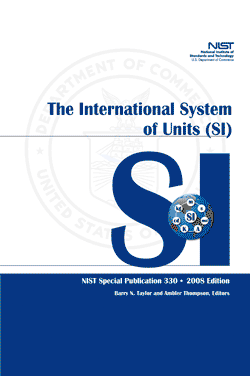
To read “the” SI standard, get a copy of the SI Brochure from the International Bureau of Weights and Measures (BIPM). It’s available at no charge in English or French.
You might also want NIST SP 330, The International System of Units (SI), which is the US version of the SI Brochure, and SP 811, Guide for the Use of the International System of Units (SI), which has much more detail on usage. These and others are available via the SI bibliography at NIST.
In addition, there’s IEEE/ASTM SI 10-2010, American National Standard for Metric Practice, which is available for $90 from ANSI or from Techstreet.
We also have a more complete list of SI reference publications from various sources.
Where can I get a list of SI prefixes and their origins?
For a complete list of the SI prefix names and symbols, with their factors, pronunciations, and origins, see SI prefixes and their etymologies.
SI prefixes are defined for powers of 1000 — i.e., 10n where n is a multiple of 3 — as well as 10±1 and 10±2. Long ago, there was a prefix for a factor of 10 000 (104), “myria,” but that is long obsolete and not used in SI. You’ll see it (and a few other obsolete units) listed in the original tables in the Metric Act of 1866.
Where can I find unit conversion factors or calculators?
Here’s a list of the most frequently used conversion factors. For a (very) comprehensive list of conversion factors, get a copy of NIST Special Publication 811, which you can download from the NIST SI bibliography, and see Appendix B.
Some handheld calculators can do unit conversions, but we don’t keep a list of model numbers. In the 1970s, various companies made cardboard or plastic “slide” converters, but as far as we know, they exist only as antiques these days.
There are many unit conversion sites online, as well as smartphone apps; do a search for them. And many search engines can do unit conversions for you. Try, for example, asking for “5 mi in km” — here’s what you get from Google and from Yahoo and from Wolfram Alpha and from Bing, to show a few examples.
Note that it’s best to avoid conversions as a way of learning and understanding the metric system. Instead, try to “think” in metric. In a way, it’s like learning another language. If your native language is English and you learn Spanish, you wouldn’t have to translate “la puerta está abierta” into English — “the door is open” — before understanding what it means; you’d understand the Spanish directly.
Similarly, it’s best to learn to understand metric measurements directly, without having to “convert” them in order to understand them.
How do you capitalize, abbreviate, and pluralize unit names and symbols?

SI unit symbols are the same in all languages, as you can see on this nutrition label from Japanese snack cakes.
SI unit names are ordinary words. SI unit symbols are exactly that — symbols — and have fixed forms. Here are some of the differences in usage.
| Unit names | Unit symbols |
|---|---|
| Unit names are spelled and pronounced differently in different languages. For example, it’s “meter” or “metre” in English, “mètre” in French, “Meter” in German, and “metro” in Spanish. | Unit symbols are the same in all languages, so the symbol “m” is universal. |
| Unit names are singular or plural as usual — one meter, two meters. (But “one hertz,” “two hertz,” since the plural of hertz is hertz.) | Unit symbols are not abbreviations, and do not have a plural form — 1 m, 2 m. |
| Unit names are capitalized only when used as the first word of a sentence or in some styles of writing titles. This applies even to units named after people: “The watt was named after James Watt.” (And it’s “megawatt,” not “megaWatt.”) There’s one exception: “degrees Celsius.” | Unit symbols are case-sensitive, so it’s always mW for milliwatt and MW for megawatt. |
| Don’t abbreviate unit names. For example, you can spell out “seconds” or use the symbol “s,” but don’t write “sec.” Ditto for cc (use cm3 or mL) and kph (it’s km/h). | Unit symbols are not abbreviations, so they are not followed by a period (unless at the end of a sentence). |
Are they spelled “meter” and “liter” or “metre” and “litre”?
Yes.
The names of SI units are ordinary words, different in different languages, and sometimes, as in English, they have multiple spellings. SI unit symbols, on the other hand, are the same in all languages.
In American English, the “-er” spellings are most common, while in British English, the “-re” spellings are used. Both are correct.
How about “gram” versus “gramme”?
The American English spelling is “gram,” while British English uses both spellings.
How about “tons” and “tonnes”?

1 cubic meter — 1000 liters — of water weighs 1000 kilograms or 1 metric ton.
The word “ton” in isolation is ambiguous because there are several kinds. The three most common are the
- short ton, 2000 lb;
- long ton, 2240 lb; and
- metric ton, 1000 kg.
The metric ton, symbol t, is also called a “tonne,” but the preferred term in the US is “metric ton,” probably because you can’t distinguish “ton” from “tonne” when spoken.
One metric ton (1 t) is close in mass to the U.S. long ton, which is 1.016 t. Note also that a metric ton is the same as a megagram (Mg), but the unit “megagram” is less commonly seen.
Is the symbol for liter “L” or “l”?
Both “L” and “l” (upper- and lowercase letter L) are correct symbols for the liter, but the uppercase version is preferred to avoid confusion with the digit 1. A script small L is occasionally seen but is not correct.
For history buffs: The original symbol for liter, adopted by the CIPM in 1879, was l (lowercase letter ell), and that was confirmed in Resolution 7 of the 9th CGPM in 1948. However, several countries later adopted a capital L to avoid confusion with the digit 1, and in 1979, Resolution 6 of the 16th CGPM decided “as an exception, to adopt the two symbols l and L as symbols to be used for the unit liter,” but said that “in the future only one of these two symbols should be retained.” As of 2014, no decision has been made, so both symbols remain correct.
How about “cc”?
The symbol for cubic centimeter is cm3 or, because the milliliter has exactly the same volume, mL.
The slang abbreviation “cc” for cubic centimeter is sometimes seen but, like other SI unit abbreviations, it should be avoided in writing.
Is the liter the same as a cubic decimeter?
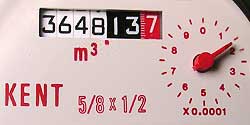
This water meter measures household water usage in cubic meters, with three decimal places plus a dial showing a fourth. There are 1000 liters in a cubic meter, so the seven-digit number is in liters.
The liter has exactly the same volume as a cubic decimeter:
1 L = 1 dm3
and the milliliter is therefore the same as a cubic centimeter:
1 mL = 1 cm3
However, the liter once was defined differently.
The liter was originally defined in 1795 as a volume equal to a cubic decimeter, just as it is now. But in 1901, the liter was redefined to be the volume occupied by a mass of 1 kilogram of pure water, at its maximum density and at standard atmospheric pressure. Under that definition, the liter differed in volume from a cubic decimeter by about 28 parts in 106. In 1964 the original definition was restored, so liter is again a special name for the cubic decimeter.
Is a micron the same as a micrometer?
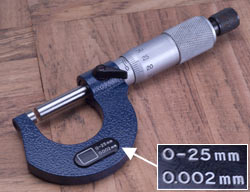
© iStockphoto / Frank Wright
A micrometer (mi·CROM·e·ter) like this can measure distances to accuracies specified in micrometers (MI·cro·me·ters). Here, the accuracy of0.002 mm is equal to 2 µm.
A micrometer is, of course, one millionth of a meter or a thousandth of a millimeter. The micron, symbol µ, was originally a special name for this distance, but the name and symbol were officially declared obsolete in 1968, so it’s no longer correct to use microns.
Note that micrometer, the unit of length, is pronounced with the accent on the first syllable. The homograph micrometer, pronounced with the accent on the second syllable, is an instrument for very accurately measuring distances.
How big is a hectare?
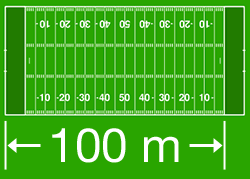
An American football field is almost exactly 100 meters from one end line to the opposite goal line. Imagine a square of that length on each side, and you’ve got an area of one hectare.
The hectare, symbol ha, is a unit of area equal to 10 000 m² and used exclusively for measuring land. The usual pronunciation rhymes with “air.”
One hectare equals (100 m)², or 1 hm², so envision a square, the length of a football field on each side, for an idea of the size of a hectare. For comparison, an acre is equivalent to a square about 64 mon a side.
There are 100 hectares in a square kilometer, so 1 km² is the same area as a square that’s ten football fields on a side.
Technically, the hectare is classified with the non-SI units accepted for use with the SI, along with the liter and metric ton. A hectare is, of course, 100 ares, where an are (“air”) is 100 m², but the are itself is no longer used.
“Hectare” is one of a few unit names (like kilohm and megohm) where the vowel at the end of the prefix is omitted in the English spelling and pronunciation to avoid a double vowel. In other cases, double vowels are not elided: megaampere, for example, is correct and has four syllables.
How do you pronounce “kilometer”?
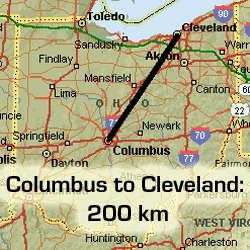
It’s almost exactly 200 km between Columbus and Cleveland, and you can probably find similar examples using your favorite cities as reminders of “long” but round-numbered distances in kilometers.
Kilometer is pronounced with the accent on the first or second syllable — KILL-oh-meet-er or kill-AH-met-er.
Note that other units with prefixes are accented on the first syllable — millimeter, kilogram, megawatt — and that words with the -AH-met-er pronunciation are generally instruments used to measure something — odometer, speedometer, thermometer — rather than units of measurement.
In particular, consider micrometer: Accented on the first syllable, it’s a (rather small) unit of distance, while accented on the second syllable it’s an instrument used to very accurately measure distances.
So it seems most logical to accent the first syllable of kilometer.
But there is no “standard” pronunciation for kilometer or any other unit name. Although SI unit symbols are international standards, unit names are not; none of the SI standards specify their pronunciation or spelling, nor does the BIPM (International Bureau of Weights and Measures).
Furthermore, unit names are spelled and pronounced differently in different languages. For example, in Spanish it’s kilómetro, pronounced roughly key-LOW-may-trow; but kilogramo, pronounced key-low-GRAH-moe. On the other hand, because the symbols are international standards, it’s km and kg in both English and Spanish.
Is “K” a synonym for “kilometer”?
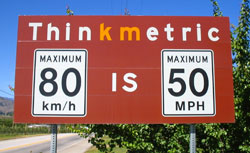
© iStockphoto / Jessie Eldora Robertson
In everyday use, there are shorthand slang nicknames for the kilometer, the most common being “K” and “klick” (plurals Ks and klicks, the latter sometimes spelled with a “c”).
The terms can mean either kilometers or kilometers per hour, the meaning being obvious in context.
Like most slang, they’re OK in speech but should be avoided in writing, where you can use “km” or “km/h” if you want to be brief. It is nevertheless common to see “a 5K race,” which everyone knows is slang for a 5 km race, not a 5 K race (5 kelvins, presumably a race conducted at a very, very cold temperature).
What about “K” for computer-related terms?

© iStockphoto / Tan Kian Khoon
In computer-related contexts, the SI prefix names and symbols are sometimes used in incorrect and confusing ways.
It started with the kilobyte, which theoretically should mean 1000 bytes but actually means 1024 bytes (210). It seemed like a good idea at the time, but things got messier as they got bigger.
For example, one megabyte sometimes means 1 048 576 bytes (a kilobyte squared), sometimes means 1 000 000 bytes, and sometimes means 1 024 000 bytes, depending on who’s talking about what.
You can read about prefixes for binary multiples if you want to know more about this issue, which is only peripherally related to the metric system.
Is it “kelvins” or “degrees Kelvin”? Celsius? Centigrade?
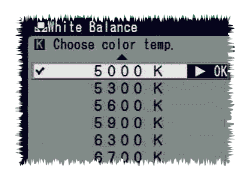
It’s K for kelvins, not °K.
It’s “kelvins” (small k) with the symbol K (capital K).
In older material you’ll run across “degrees Kelvin,” symbol °K, but that usage was officially declared obsolete in 1980.
Celsius temperature is expressed in degrees Celsius (small “d,” capital “C”), with symbol °C. The old term “degree centigrade” was officially declared obsolete in 1948.
What about angles? Radians, steradians, degrees, . . .
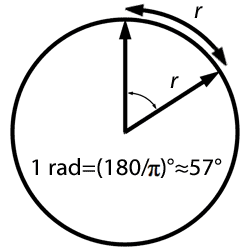
One radian, which is (180/π)° or about 57°, is the angle that, from the center of a circle, cuts an arc whose length equals the radius of the circle.
The SI unit of plane angle is the radian, symbol rad. The radian is the angle that, subtended from the center of a circle, cuts an arc equal in length to the radius. Because the circumference of a circle is 2π times its radius, a complete circle (360°) is 2π rad; thus, 1 radian is 180/π degrees, or approximately 57°.
Officially, the radian is a derived unit that is a special name for the number one, which follows from its definition: Being a ratio between an arc length and a radius, its base units are m/m = 1.
That said, the radian is rarely used outside of technical and scientific contexts, where it is useful because it is a coherent unit, simplifying many formulas in physics, but the details are beyond the scope of this FAQ.
In ordinary usage, angles are almost always expressed in degrees, with fractional values either in decimal parts of degrees or in minutes and seconds (the latter sometimes called “arcminutes” and “arcseconds” when ambiguity is an issue). Note that no space is left between the numeric value and symbol: 12°34’56”.
The gon (also called the grad or grade) is defined as (π/200) rad. Thus, there are 100 gon in a right angle. The potential value of the gon in navigation is that, because the distance from the pole to the equator of Earth is approximately 10 000 km, 1 km on the surface of Earth subtends an angle of one centigon at the center of Earth. However the gon is rarely used.
The SI unit for solid angle is the steradian, symbol sr, defined as the solid angle subtended at the center of a sphere by a portion of the surface whose area equals the square of the sphere’s radius. As such, its units are m²/m², and so technically the steradian is a derived unit that is special name for the number 1.
Solid angles are so rarely encountered outside of technical contexts that there are no other common solid angle units. Note that some SI units include the steradian in their definitions, such as the lumen, which is 1 cd·sr.
What about atmospheric pressure: hectopascals, kilopascals?
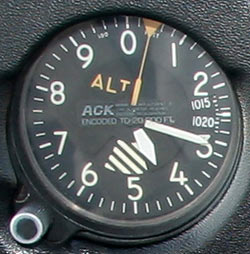
An altimeter set to 1018 hectopascals in an aircraft flying at 4300 feet. This one is in South Africa; in the U.S., the altimeter would have the ability to use inches (of mercury). Extracted from Jim Sher’s control panel photo.
Like any other pressure, atmospheric pressure (or “barometer,” referring to the instrument that measures it) is expressed in pascals (Pa).
Atmospheric pressure at Earth’s surface is generally in the neighborhood of 100 000 pascals. It’s usually expressed either in hectopascals, often to the nearest tenth (1013.3 hPa), or kilopascals, often to the nearest hundredth (101.33 kPa).
The World Meteorological Organization’s Publication 8, Guide to meteorological instruments and methods of observation, specifies the units for meteorological observations; these include “atmospheric pressure, p, in hectopascals (hPa).” It also specifies that “the scales of all barometers used for meteorological purposes should be graduated in hPa.” Using hectopascals has the advantage that the numerical value is identical to that in millibars, a pre-SI unit for pressure. Internationally, hPa are also used for aircraft altimeter settings.
Note, by the way, that air pressure changes significantly with altitude, so the “barometer” reading in a weather report is not the actual pressure measured at the weather station, but (oversimplifying a bit) an indication of what the pressure would be if the station were at sea level.
The “standard atmosphere”—more or less the average air pressure at Earth’s sea level—was defined in 1954 as 101 325 pascals. At one time this was treated as a unit (1 atm = 101.325 kPa); now, it is still the definition of the standard atmosphere but is no longer used as a unit.
Why does the base unit for mass, the kilogram, have a numeric prefix?
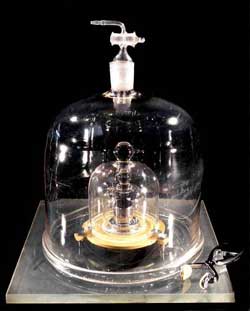
The international prototype of the kilogram at the BIPM.
It’s a historical accident.
When the metric system was originally developed, the standard unit for mass was the mass of a liter of water at the ice point — basically the same as today’s kilogram, although at the time it was called the “grave.”
After the French Revolution, the new government decided that this unit was inconveniently large, since many mass measurements involved much smaller masses. As a result, they changed the standard to be 1⁄1000 of its original value, and named it the “gramme” (essentially the same size as today’s gram).
But it would have been impossible to make a 1-gram object to serve as the prototype mass standard, so they created a “kilogram of the archives” to serve as the actual standard.
But it’s best if the standard and the base unit are equal, so the base unit was later declared to be the kilogram. Renaming it would have been difficult so the name stuck.
See also The name “kilogram”: a historical quirk from BIPM.
Is it “weight” or “mass”?
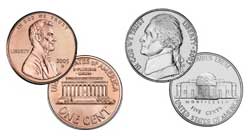
A US cent weighs exactly 2.5 g, while the nickel weighs exactly 5 g. On the moon, a nickel still weighs 5 g — its mass is unchanged — but in the technical sense of the word it weighs about 50 millinewtons on Earth but only8 mN on the moon.
In everyday use, “weight” is a synonym for “mass.” You weigh something to determine its mass, which is usually called its “weight,” measured in grams, kilograms, metric tons, or the like: “A U.S. nickel weighs 5 grams.”
However, scientific and technical literature reserves the term “weight” for (roughly speaking) the gravitational force an object “feels,” measured in newtons. In science class, you’d say, “The mass of a nickel is 5 grams. It weighs about 50 millinewtons on Earth and about 8 mN on the moon.”
But does that mean that “weight” is an ambiguous word? Not necessarily. In fact, one of the advantages of the metric system is that it often eliminates ambiguity. Consider:
A nickel weighs 5 grams.
There’s no ambiguity; clearly that sentence refers to mass, because the gram is a unit of mass. A nickel weighs 5 grams on Earth, on the moon, and on the International Space Station. On the other hand:
A nickel weighs about 50 mN on Earth, 8 mN on the moon, and 0 mN on the ISS.
There’s no ambiguity; clearly that sentence refers to the force of gravity, because the newton is a unit of force.
But writing those sentences using non-metric units can lead to ambiguity, because (e.g.) there’s both a unit of mass called “ounce” and a unit of force called “ounce.”
Should there be a space between the number and a unit symbol?
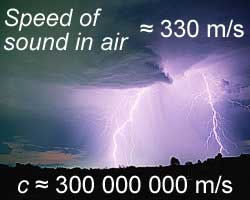
Put a space between the number and units: In air, sound travels at about330 m/s (depending on temperature). The speed of light is about300 000 000 m/s. Count the number of seconds between seeing lightning and hearing thunder, then divide by 3 for the approx. distance of the lightning in kilometers.
Put a space between the numerical value and unit symbol — 25 kg, not 25kg.
A space is recommended even when used as an adjective — “a 25 kg sphere” — although the normal rules of English apply to unit names, where a hyphen is used for the adjectival sense — “a 25-kilogram sphere.”
For degrees Celsius, the correct spacing looks like this: 20 °C.
Angles are an exception, written without spaces: 12°.
How about commas to separate groups of three digits?
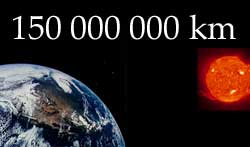
Spaces are preferred to break numbers into groups of three digits: The sun is150 000 000 km from Earth. (Composite of Apollo 16 and SOHO photos.)
The preferred approach is to use spaces to separate numbers into groups of three digits to the left and right of the decimal point:
“The speed of light in vacuum is exactly 299 792 458 m/s” or “The value of pi is approximately 3.141 592 65.”
In English, commas are often used as digit separators: “The speed of light in vacuum is exactly 299,792,458 m/s.” That’s OK, but there’s a potential ambiguity in numbers like 3,141 — is that three thousand one hundred forty-one, or is it the first few digits of pi with a comma for the decimal point (see the next question)?
What about the decimal point? I’ve seen a comma instead of a period.
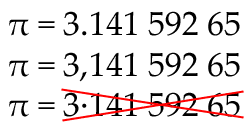
The dot on the line (period/full stop) is the usual decimal point in English. The comma is also correct but rare in English. The half-high dot should be avoided because it normally indicates multiplication.
In English — both American and British — the decimal marker is the point on the line: 3.14. And always put at least one digit before the decimal point: 0.25 s rather than .25 s.
The long story: You’ll sometimes see a point — 3.14 — and sometimes a comma — 3,14 — to mark the decimal point. They’re both correct.
You might think it’s a language issue, but it’s more complicated than that. In some languages that are native to more than one country, either the point on the line or the comma on the line is used as the decimal marker depending on the country.
You might think it’s a nationality issue, but it’s more complicated than that. In some countries with more than one native language, either the point on the line or comma on the line is used depending on the language.
You might think it’s a standards issue. Some international standards bodies specify the comma as the decimal marker in all languages.
But in reality, either the point or the comma is correct, and you should use whatever is “standard” where you are; it doesn’t change just because you’re using SI.
In 2003, the 22nd General Conference on Weights and Measures officially declared “that the symbol for the decimal marker shall be either the point on the line or the comma on the line,” and the International Bureau of Weights and Measures uses the point in its English-language publications and the comma in its French publications.
As for international and national standards organizations’ opinions, ISO 31-0:1992, Quantities and units — Part 0: General Principles, in Section 3.3.2 says, “The decimal sign is either the comma on the line or the point on the line.” (This was reworded by Amendment 2.) IEEE/ASTM SI 10-2002, American National Standard for Use of the International System of Units (SI): The Modern Metric System, Section 3.5.4.1, says, “In the U.S., the decimal marker is a dot on the line.”
There is, in fact, a third flavor. In some material you’ll run across a centered dot used as a decimal point — 3·14 — but this should be avoided. The half-high dot should be used only to indicate multiplication, although this is recommended primarily for derived units — kW·h — and not for multiplication of numbers when the dot is used as the decimal point — 53 m/s × 10.2 s is preferred over 53 m/s · 10.2 s.
How about billions and billions?
It’s OK to use the words billion (1 000 000 000 or 109), trillion (1 000 000 000 000 or 1012), etc.
Long ago, those words meant different things in British English than in American English, but the world has settled on the (originally) American definitions, so there’s no longer any reason to avoid billions and trillions.
The table of SI prefixes and their etymologies shows the prefixes for very large and very small multiples.
How do you handle fractions of a metric unit?

Using metric measurements, you don’t need to do arithmetic with mixed numbers.
Use decimal fractions, not common fractions. For example,
| Good: | 2.5 m |
| Bad: | 2½ m |
You may, of course, say “two and a half meters” — 0.5 is often read aloud as “one half” — but you should always write it as a decimal fraction.
How about mixing units?
A single measurement uses a single unit (which may be a derived unit like km/h).
| Good: | 1.76 m |
| Good: | 176 cm |
| Bad: | 1 m 76 cm |
There may be a difference between the way a value is written and the way it’s spoken. For example, someone’s height is usually given in meters or centimeters — 1.76 m or 176 cm — but it’s sometimes spoken as “one meter seventy-six,” even though it’s not written that way.
Every rule seems to have exceptions, and the exceptions to this rule include the use of mixed units in angles and times:
| Angles: | 12°34’56” |
| Times: | 2 d 12 h 15 min 5 s |
In addition, one common way to express motor vehicle fuel efficiency uses liters per hundred kilometers, leading to a measurement like 9.8 L/(100 km); mathematically speaking, parentheses are required, but in practice the parentheses are usually omitted: 9.8 L/100 km.
Is it OK to use centimeters?
Centimeters are perfectly good metric units; feel free to use them.
Sometimes, there are industry-specific conventions for preferred unit prefixes. For example, §3.2.2(c) of IEEE/ASTM SI 10-2002, American National Standard for Use of the International System of Units (SI): The Modern Metric System, says:
“For certain quantities in particular applications, one particular multiple or submultiple is often used. For example, the millimeter is used for linear dimensions in engineering drawings even when the values lie far outside the range of 0.1 mm to 1000 mm; the centimeter is usually used for body measurements and clothing sizes.”
Such preferences apply only in their particular fields, of course.
How about multiple prefixes?

Never do this: From a 1944 physics textbook, but multiple prefixes are no longer acceptable (and the “F” should be capitalized).
SI prefixes are never combined. Use one prefix or none at all.
In old material, you’ll encounter usage like “2200 μμF”, but this is not correct — it’s a 2200 pF capacitor. Similarly, MF or MFD was sometimes used instead of μF. This is incorrect, but the Greek letter mu wasn’t always available.
(By convention, capacitance values are given in microfarads — 0.0022 μF — or picofarads — 2200 pF — but not nanofarads, even though it would certainly be correct to note that this example is a 2.2 nFcapacitor.)
How do you write units derived by multiplication or division?
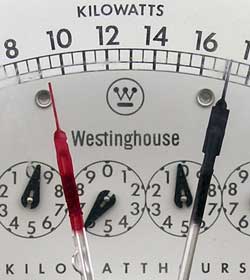
Multiply kilowatts by hours to derive the unit kilowatt hours (normally written with a space). Use 1 kW of electricity for1 h and you’ve used 1 kW·h or 3.6 MJ of energy. 1 joule (usually pronounced “jool”) is equivalent to 1 watt second, so 1 kilowatt hour is 3.6 megajoules.
Some units are combinations of other units formed by multiplying or dividing them — technically, “derived units.”
Multiplication is indicated by a half-high dot or a space, or — if there’s no ambiguity — concatenation without a space, although this style is generally less preferred:
| kW·h | kW h | kWh |
The corresponding unit name uses a space — kilowatt hour — or, less preferred, a hyphen — kilowatt-hour.
Division is indicated by a slash, horizontal line, or exponent:
| m/s |
|
m·s-1 |
The corresponding unit name uses the word “per” — meters per second.
Note that derived units can involve multiple prefixes: 10 mm/ms is ten millimeters per millisecond. In general, it’s best to avoid using prefixes in both the numerator and denominator — except for kg, which is preferable to g — but multiple prefixes might be appropriate in some situations.
Does an exponent apply to the prefix as well as the unit?
An exponent applies to the combination of the prefix and unit. So, for example,
cm3
is the cubic centimeter, the volume occupied by a cube that’s 1 cm on a side. It’s not 1⁄100 of a cubic meter (and no, you can’t write c(m3), partly because prefixes cannot stand alone — among other things, you wouldn’t know whether “m” meant milli- or meter).
How can I type unit symbols such as m2, °C, and µm?
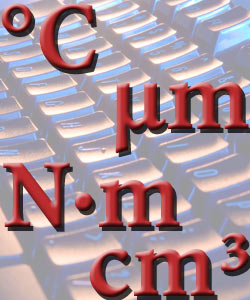
Instructions for typing special characters such as exponents, the degree symbol, and the Greek letter mu depend on your computer’s operating system and what particular software you’re typing “at,” among other things. Following is some general advice; consult your computer’s “help” system or other documentation for further assistance.
You might find, for example, that your keyboard lets you redefine keys to make it easier to type commonly used special characters, or your word processing software might have additional ways to enter special characters (e.g., Microsoft Word’s “autocorrect” feature).
Windows
You can type many special characters by using the Alt key and the numeric keypad at the right side of your keyboard (make sure NumLock is on). For the characters shown in the table below, hold down Alt, type the number including the leading zero on the numeric keypad, then release Alt, and Windows will treat it as the indicated character.
Macintosh
You can type many special characters by using the Option key. For the characters shown in the table below, hold down Option while pressing the indicated key. You might also find the Keyboard Viewer and Character Palette useful (available via System Preferences, International, Input Menu).
Character chart
The following table shows a few commonly used characters for composing unit symbols. Note that only a few superscript characters are available this way. For more complex cases, such as m·s-1, you’ll need to use superscript features of your word processing software (or, in HTML, the <sup> element).
| Character | Windows | Mac |
|---|---|---|
| µ (Greek letter mu) | Alt+0181 | Option+m |
| ° (degree sign) | Alt+0176 | Option+Shift+8 |
| · (middle dot) | Alt+0183 | Option+Shift+9 |
| ² (superscript 2) | Alt+0178 | |
| ³ (superscript 3) | Alt+0179 |
The SI is a coherent system of units, but what does that mean?
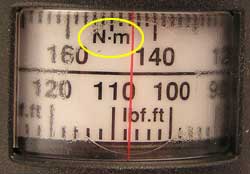
N·m — newton meters — is an SI derived unit equivalent to kg·m2·s-2. There is, in fact, a special name for that SI derived unit: joule (J). But when a single SI unit corresponds to more than one quantity, there sometimes are naming conventions to distinguish them. Joules are used for energy, but torque (moment of force) is, by convention, expressed in N·m, and the photo shows the scale of a torque wrench.
The technical meaning of coherent is a bit different from the everyday meaning.
In a coherent system of units, you choose a set of base units for a set of fundamental, unrelated physical quantities, and derive other units by multiplication and division, without introducing any numerical constants. As a result, numerical (unit) equations and physical (quantity) equations have the same form.
In SI, you start with seven base units: the meter (m) for length (l), the kilogram (kg) for mass (m), the second (s) for time (t), the ampere (A) for electric current (I), the kelvin (K) for thermodynamic temperature (T), the mole (mol) for amount of substance (n), and the candela (cd) for luminous intensity (Iv). By convention, symbols for quantities are italicized, while symbols for units used to measure those quantities are in roman (non-italicized) type.
Quantities can be manipulated algebraically to derive other quantities. For example, velocity is length divided by time (neglecting relativity):
v = l/t
Units, too, can be manipulated algebraically to derive other units. Substituting the corresponding units in this example, we divide meters (m) by seconds (s) to create the SI derived unit of velocity, meters per second (m/s).
Because we didn’t introduce any numerical factors, this set of units is coherent, and the numerical (unit) equations and the physical (quantity) equations therefore have the same form. In this example,v = l/t is literally true when you use the units meters, seconds, and meters per second for l, t, and v respectively. You don’t have to introduce any numerical factors to “convert” units.
Here’s another example. You probably know that
F = ma
Using SI base units — kilograms for m, meters per second squared for a, and newtons for F — that equation is literally true: just plug in the numbers. (”Newton” is a special name for the derived unit kg·m·s-2.)
Using a system of units that’s not coherent, the equation becomes
F = kma
where k is a constant whose value depends on the units. For example, if you use pounds for m, feet per second squared for a, and pounds-force for F, you need to use the value of (approx.) 32 for k, to get the right answer. Alternatively, you can introduce new units, such as the poundal for F or the slug for m, to make k=1, but those are beyond the scope of this answer.
The term SI units refers to the complete set of base units, derived units, and decimal multiples and submultiples thereof. The term coherent SI units refers to the coherent subset, and therefore excludes decimal multiples and submultiples.
For example, meters, kilometers, and centimeters are all SI units, as are meters per second and centimeters per second. But of that group, only meters and meters per second are coherent SI units.
Note: In the past, the term SI units technically meant only the coherent units. Thus, the meter was considered an SI unit but the millimeter was not an SI unit, although both were considered units of the SI. This confusing terminology was officially eliminated in 2001.
What’s a metric? A metric century? A metric marathon?
The noun “metric” refers to a measurement for comparing or evaluating something.
For example, two metrics for baseball players are the batting average and RBI (runs batted in). A metric (albeit not very useful) for comparing computer programmers is the number of lines of code written each day. A metric for students is the grade or grade point average.
Note that “metric” (in the context of the SI) is an adjective, not a noun: metric system, metric units, metric legislation, metric conversion, metric ton, etc. People sometimes use “metric” or “metrics” as slang for “the metric system,” but technically this is not correct.
There are other “metric” things that are only peripherally related to the metric system. Among them:
- A metric century is a 100 km bicycle race.
- A metric marathon is a 26.2 km run. (A regular marathon is about 26.2 mi.)
Is the Body Mass Index (BMI) a metric measurement?

© iStockphoto / Dennis Cox
Body mass index (BMI) is a measure of body fat based on height and mass:
![]()
So, weigh yourself in kilograms, divide by the square of your height in meters, and the result is your BMI.
Using non-metric measurements, one must convert units:

Either way, the result has units of kg/m², although BMI values are usually shown without units. For adults, BMI values are interpreted as:
| BMI | Category |
|---|---|
| Below 18.5 | Underweight |
| 18.5–24.9 | Normal |
| 25.0–29.9 | Overweight |
| 30.0 and above | Obese |
For more about BMI, visit the Centers for Disease Control and Prevention’s BMI page.
See also Is it “weight” or “mass”? elsewhere in this FAQ.
What about metric paper sizes?
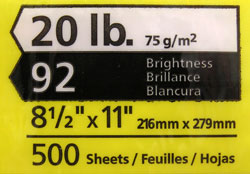
In metric units, this paper’s grammageis 75 g/m2 (sometimes seen as “gsm”), meaning, of course, that a sheet 1 square meter in area weighs 75 grams. The non-metric equivalent, 20 lb, is itsbasis weight or substance, and means that 500 sheets cut to the basis size — for bond paper, 17 by 22 inches — weigh 20 pounds.
ISO 216:1975, Writing paper and certain classes of printed matter — Trimmed sizes — A and B series, defines international standard paper sizes that are sometimes (arguably incorrectly) called “metric paper sizes” because they’re based on an area of 1 m2. Here’s a brief overview.
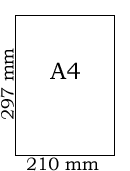
- In the ISO-A series, an A0 sheet has an area of 1 m2. In the ISO-B series, a B0 sheet has an area of √2 m2.
- The aspect ratio of each sheet is √2. As a result, if you cut a sheet in half, you get two sheets with the same aspect ratio as the original.
- Cut an A0 sheet in half, and you get two A1 sheets. Cut them in half and you get A2 sheets. Etc. Ditto for the B series. Since they all have the same aspect ratio, something that fits on (e.g.) an A3 sheet can be shrunk to fit an A4 sheet or enlarged to fit an A2 sheet, without cropping.
The A4 size is similar to American “letter” size paper, but a bit narrower and longer: A4 is 210 mm × 297 mm while letter-size paper is 216 mm × 279 mm.
For more details, read Markus Kuhn’s writeup on International standard paper sizes.
What about dates and times?
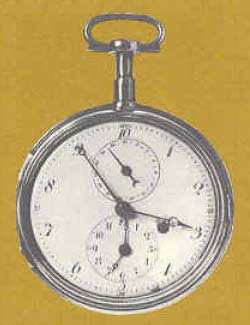
The decimal watch never took hold….
Dates and times aren’t changed by the metric system.
From a standards point of view, SI defines the length of the second, which is an SI base unit. The minute, hour, and day — with symbols min, h, and d — are officially considered “non-SI units accepted for use with the International System.”
Otherwise, times (in the sense of “what time is it?”) and dates are outside the scope of the SI.
That said, the Time Section of the International Bureau of Weights and Measures is responsible for maintaining TAI, from which the UTC time scale — and your local time — is derived. The Gregorian calendar, on the other hand, is seemingly a universal standard without an actual standard defining it beyond the original proclamation in 1582.
However, it might be worth mentioning ISO 8601:2000, Data elements and interchange formats — Information interchange — Representation of dates and times. Its purpose is to help when moving files between computer programs, but it’s also useful when humans write numeric date formats.
In ISO 8601 notation, you’d write October 1, 2005 as
2005-10-01
The meaning is obvious even to someone who’s never seen that format, and it’s not ambiguous. The problem with 10/1/2005 and 1/10/2005, of course, is that both mean both 1 October 2005 and 10 January 2005.
So, you don’t have to switch from spelling out dates to ISO 8601 format, but when you do write dates numerically in places others will see them, like a Web page, consider using the ISO 8601 format.
For more, visit Markus Kuhn’s A summary of the international standard date and time notation.
What’s the difference between hard and soft metric conversion?
The terms hard conversion and soft conversion refer to approaches you might take when converting an existing dimension from non-metric units to SI. “Hard” doesn’t refer to difficulty, but (essentially) whether hardware changes during the metrication process. However, the terms can be confusing and are probably best avoided, because they’re not always consistently defined and their meanings can be non-intuitive.
It’s simplest to consider two cases, “converting” a physical object and conversions that don’t involve an object.
Physical object dimensions
When converting a physical object, such as a product, part, or component, from inch-pound to metric measurements, there are two general approaches.
First, one can replace the part with one that has an appropriate metric size. This is sometimes called a hard conversion because the part was actually replaced by one of a different size — the actual hardware changed.
Alternatively, one can keep the same part, but express its size in metric units. This is sometimes called a soft conversion because the part wasn’t replaced — it was merely renamed.
For example, if an existing part is 6 inches long — 152.4 mm — it might be metricated by either
- replacing the part by one that’s 150 mm long (hard metric conversion), or
- keeping its size unchanged at 152.4 mm but calling it a 150-mm part (soft metric conversion).
If the latter sounds odd, note that many items’ dimensions are actually nominal sizes — round numbers that aren’t their exact measurements — such as lumber, where a 2×4 isn’t really 2 by 4 inches, and pipe, where ½ inch pipe has neither an inside nor outside diameter of ½ inch.
Conceptual dimensions
When converting a measurement that does not involve a physical object, such as a guideline in a standard, there are again two approaches.
First, one can replace the inch-pound measurement with an exact conversion to its metric equivalent. This is sometimes called a soft conversion, because the dimension did not change but has merely been given “a new name.”
Alternatively, one can replace the inch-pound measurement with a similar but different metric measurement, generally chosen to be a round number. This is sometimes called a hard conversion, because the dimension actually changed.
(Replace “dimension” by “part” in the preceding two paragraphs to see the relationship to the corresponding terms in the preceding section.)
For example, a standard might define lines painted on street pavement to separate lanes:
A normal line is 4 to 6 in wide. … Broken lines should consist of 10 ft line segments and 30 ft gaps….
The exact dimensions aren’t critical, so the metric (dual-dimensioned) version can use round metric equivalents:
A normal line is 100 to 150 mm (4 to 6 in) wide. … Broken lines should consist of 3 m (10 ft) line segments and 9 m (30 ft) gaps….
This is a hard conversion because the actual dimensions changed.
On the other hand,
Centerline markings shall be placed on all paved urban arterials and collectors that have a traveled way of 20 ft or more in width….
Replacing 20 feet by 6 meters would require centerlines to be painted on some roads that previously didn’t require them. Using 7 meters would have safety implications, eliminating the requirement for centerlines on some roads where they’re currently required. So in this case, a more precise conversion is warranted:
Centerline markings shall be placed on all paved urban arterials and collectors that have a traveled way of 6.1 m (20 ft) or more in width….
This is a soft conversion because the actual dimension did not change, but is merely expressed in different units.
Is the proper term metrication or metrification?
We prefer “metrication.” There is no “if” about metrication, just “when.”
The Oxford English Dictionary lists metrication as the preferred form. Its earliest citation is a 29 November 1965 Times article quoting J. V. Dunworth, Director of the National Physical Laboratory:
Earlier this year the National Physical Laboratory sought the guidance of the editor [sc. E. McIntosh] of the Concise Oxford Dictionary on this matter… His reply was as follows: — ‘Consider the following: Carbon(ize); decimal(ize);..methyl(ate); oxygen(ate). The modern tendency is to use -ize, -ization in forming new words rather than -ate, -ation. It seems to me that either metrication or metricization could be used.’ In the light of these comments the N.P.L. and the Ministry of Technology chose ‘metrication’ on the grounds of brevity and euphony. The corresponding verb ‘metricate’ seems very satisfactory.
The term metrification is slightly more recent and less commonly used.
Does the non-metric U.S. system of measurements have a name?
There’s no official name for the non-metric U.S. system of weights and measures, but the most commonly used terms are:
- “customary system” or “customary units” or “customary weights and measures” (Metric Act, 1866; Mendenhall Order, 1893; NIST SP 345, A Metric America: A Decision Whose Time Has Come, 1971)
- “inch-pound units” (frequent, though more recent)
If it’s not obvious from the context, it’s wise to distinguish the U.S. system from others: “U.S. customary system.” For the same reason, the terms “Imperial system” and “English system” are best avoided when referring to U.S. measurements because those terms usually refer to the British system. The Imperial gallon, quart, pint, etc., differ in size from the corresponding U.S. units, although the Imperial units have largely been abandoned as the British Commonwealth nations that used them went metric.
In fact, one should bear in mind that the non-metric “system” isn’t really a system at all, but a collection of units that has evolved over time, with the values of same-named units varying from country to country and, in some cases, varying depending on what’s being measured. For a good look at these issues, read J.K. Upton’s 6 March 1878 report to Congress as well as Alexander Graham Bell’s 16 February 1906 address to Congress.
How are U.S. customary units officially defined?
Since 1893, U.S. customary units have been defined in terms of the SI. The main relationships are “1 yard equals 0.9144 meter” and “1 pound (avoirdupois) equals 0.453 592 37 kilogram,” from which other non-metric units (inches, feet, ounces, etc.) are derived.
For details, read the 1893 Mendenhall Order and the 1959 refinement of values for the yard and pound, as well as the 1954 adoption of the International Nautical Mile.
Which countries are (and aren’t) metric?
Folklore suggests that three countries don’t use the metric system — the U.S., Liberia, and Myanmar/Burma — while all others do. In reality, virtually all countries use the metric system, and the question of who is and isn’t metric (see below) is difficult to answer.
Regarding which countries went metric when, see USMA’s metric usage and metrication in other countries page. We also have information about recent international metric advances in countries still in the process of going metric.
For some historical information about countries’ adoption of the metric system, read J. K. Upton’s 1878 report to Congress (he includes a summary about half-way into his writeup).
How do you decide whether a country is “metric” or “non-metric”?
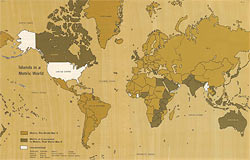
The world in 1971, from the NBS metric study, showing metric and non-metric countries. For a larger view, see the last section of the Origin of the metric system.
People like to think of a country as being “metric” or “non-metric,” but deciding which label to apply is difficult because it’s not an either/or condition that switches on a particular date.
For example, it’s often stated that the U.S. is a non-metric country. But while the U.S. is non-metric in some areas, such as road signs, speedometers, and weather reports, it’s metric in many other areas, such as food quantity and nutrition labels, and car and machinery manufacturing, and athletes run 100-meter races.
Conversely, Canada is generally considered to be metric, and its road signs indeed are, yet it uses yards in its football games and typically uses feet and inches and pounds when describing a person’s height and weight. Similarly, it’s usually stated that the UK is a metric country, but its road signs are non-metric, just like the U.S.
So, beware of reading too much into the “metric” and “non-metric” labels when applied to entire countries. Even the question of whether a country is “officially” metric is harder to answer than you’d think. For example, officially, the U.S. has been metric since 1866, 1893, 1975, or 1988, depending on which official declaration you prefer to cite, and similar uncertainties apply to other countries.
Back to USMA home.
Copyright © 2003–2014, US Metric Association (USMA), Inc. All rights reserved.
Updated: 2015-05-10